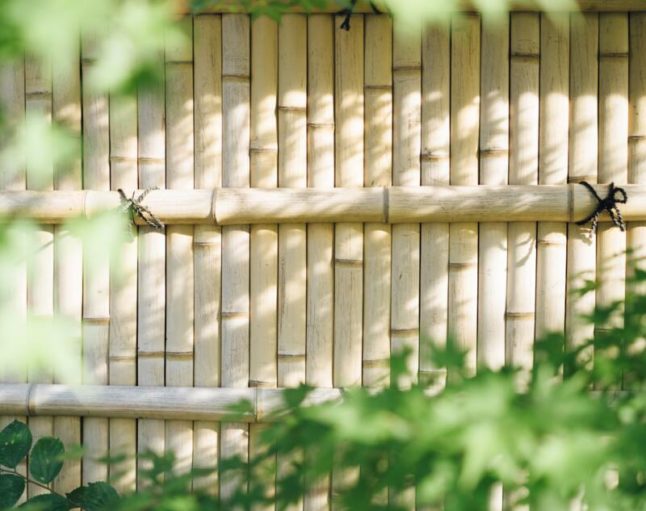All Categories
Featured

As sustainability becomes an increasingly crucial consideration for home owners, even more people are transforming to eco-friendly fence materials. Whether you're developing a fencing for personal privacy, safety and security, or visual objectives, selecting materials that decrease ecological influence is a terrific way to contribute to a healthier world. Here's a consider the top environmentally friendly fence materials available today and their advantages.
- Bamboo Secure Fencing: Eco-friendly and fast-growing. Bamboo is one of one of the most lasting fence materials on the marketplace. Unlike traditional timber, bamboo is extremely fast-growing, which suggests it can be collected without depleting woodlands. This makes it a very renewable energy, with some species maturing to three feet in a solitary day.
Environmental Benefits: Bamboo soaks up much more carbon dioxide than many various other plants, assisting to balance out greenhouse gases. Its rapid growth rate implies it can be harvested regularly, making it an eco-friendly product. Sturdiness: Bamboo fences are naturally immune to insects and decay, especially when properly treated, minimizing the requirement for chemical therapies. Aesthetic Appeal: Bamboo provides a special, natural look that enhances both standard and modern landscape design layouts. However, while bamboo is an excellent option, it is necessary to make sure that the bamboo utilized is sensibly sourced to stay clear of adding to ecological destruction.
- Recycled Steel Fencing: Durable and Recyclable. Recycled steel secure fencing, such as aluminum or steel, supplies an environmentally friendly alternative to standard wood fencings. These steels are commonly made from recycled products, decreasing the need for brand-new mining and the ecological effect associated with removing resources.

Ecological Benefits: Metals like light weight aluminum and steel are 100% recyclable, indicating they can be reused and repurposed indefinitely without losing high quality. Resilience: Metal fencings are exceptionally durable, immune to weather, parasites, and use, making them a durable option that does not need to be changed frequently. Reduced Upkeep: Recycled steel fences call for very little maintenance and do not require to be repainted or secured on a regular basis, lowering the requirement for added chemicals. The major drawback is that metal fences may not supply the exact same privacy as timber or plastic choices, as they can have voids depending on the style.
- Recycled Timber Fencing: All-natural and lasting. For those that like the timeless appearance of timber however want an environment-friendly choice, recycled wood secure fencing is a superb option. This material is made from redeemed timber from old structures, pallets, and even furniture, diverting these products from landfills.
Ecological Advantages: Using recycled timber protects against the need to lower new trees, aiding to save woodlands and reduce deforestation. Visual Appeal: Recycled wood supplies a rustic, natural look and can be customized to suit any home design. Sustainability: Considering that it is sourced from existing timber items, recycled wood doesn't require brand-new handling, which minimizes power intake and carbon discharges. While recycled timber fences are an environment-friendly option, they may need even more maintenance in time than steel or bamboo fences, as wood can be vulnerable to decay and pests if not correctly dealt with.

- Living Fencings: All-natural and Eco-friendly. Living fences, which are made from dense growings like bushes, bushes, or trees, provide a green and entirely all-natural alternative to traditional secure fencing products. These fencings not just give privacy yet also improve your garden with stunning greenery.
Ecological Benefits: Living fences can soak up co2, provide environment for wild animals, and improve air quality. Noise Decrease: Dense growings can serve as all-natural , lowering website traffic sound or other undesirable audios. Visual Appeal: They add a soft, natural aesthetic to any type of property and can be customized to fit any style. While living fencings are environment-friendly, they do require regular maintenance such as trimming, watering, and in some cases pest control.
- Hemp Fence: Eco-friendly and Strong. Hemp is another sustainable product that has actually made its method right into the fence industry. Hemp fences are made from strong hemp fibers that are woven together to produce resilient and environmentally friendly panels.
Ecological Advantages: Hemp grows swiftly and needs marginal water, making it a resource-efficient plant. When no longer needed, the material is biodegradable and can be composted. Strength and Sturdiness: Hemp fence is weather-resistant and surprisingly solid, making it suitable for many environments. Sustainability: Hemp farming needs fewer pesticides and fertilizers than conventional plants, making it an eco responsible option. Hemp fencing might not be as extensively readily available as various other materials, depending on your place.
Verdict: Sustainable Selections for Every Demand. Choosing green secure fencing products is a great way to lower your ecological impact while still achieving the personal privacy, safety, and aesthetic you prefer. From fast-growing bamboo to recycled wood and metal, there are a range of sustainable options that can assist you create a lovely, practical fencing while sustaining a healthier planet. By taking into consideration elements such as longevity, maintenance, and ecological influence, you can pick the ideal eco-friendly fencing product for your needs and lifestyle.
Latest Posts
The Restroom Upgrade Every Detroit Home Is Worthy Of
Published Apr 19, 25
1 min read
Affordable Car Repair Services at Montclare Auto Repair - Don’t Wait, Act Now!
Published Apr 19, 25
2 min read
Unlock Exclusive Discounts with WyHy's Love My Lending institution Rewards
Published Apr 19, 25
1 min read
More
Latest Posts
The Restroom Upgrade Every Detroit Home Is Worthy Of
Published Apr 19, 25
1 min read
Affordable Car Repair Services at Montclare Auto Repair - Don’t Wait, Act Now!
Published Apr 19, 25
2 min read
Unlock Exclusive Discounts with WyHy's Love My Lending institution Rewards
Published Apr 19, 25
1 min read